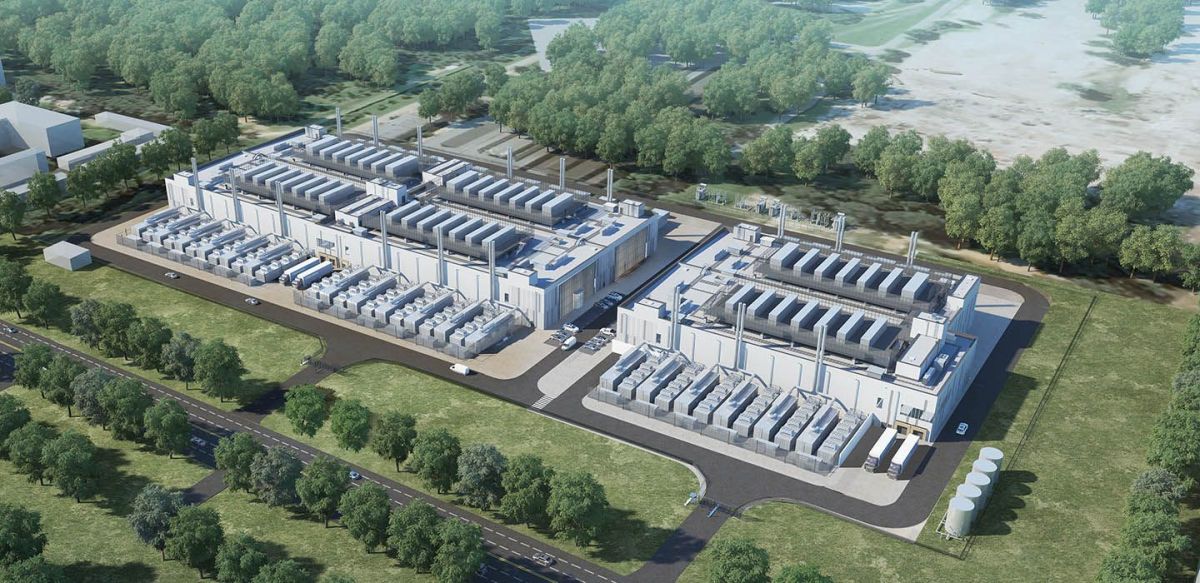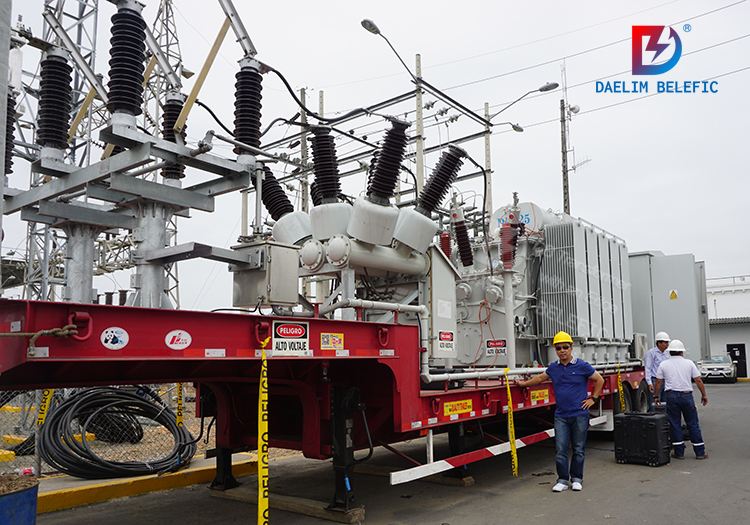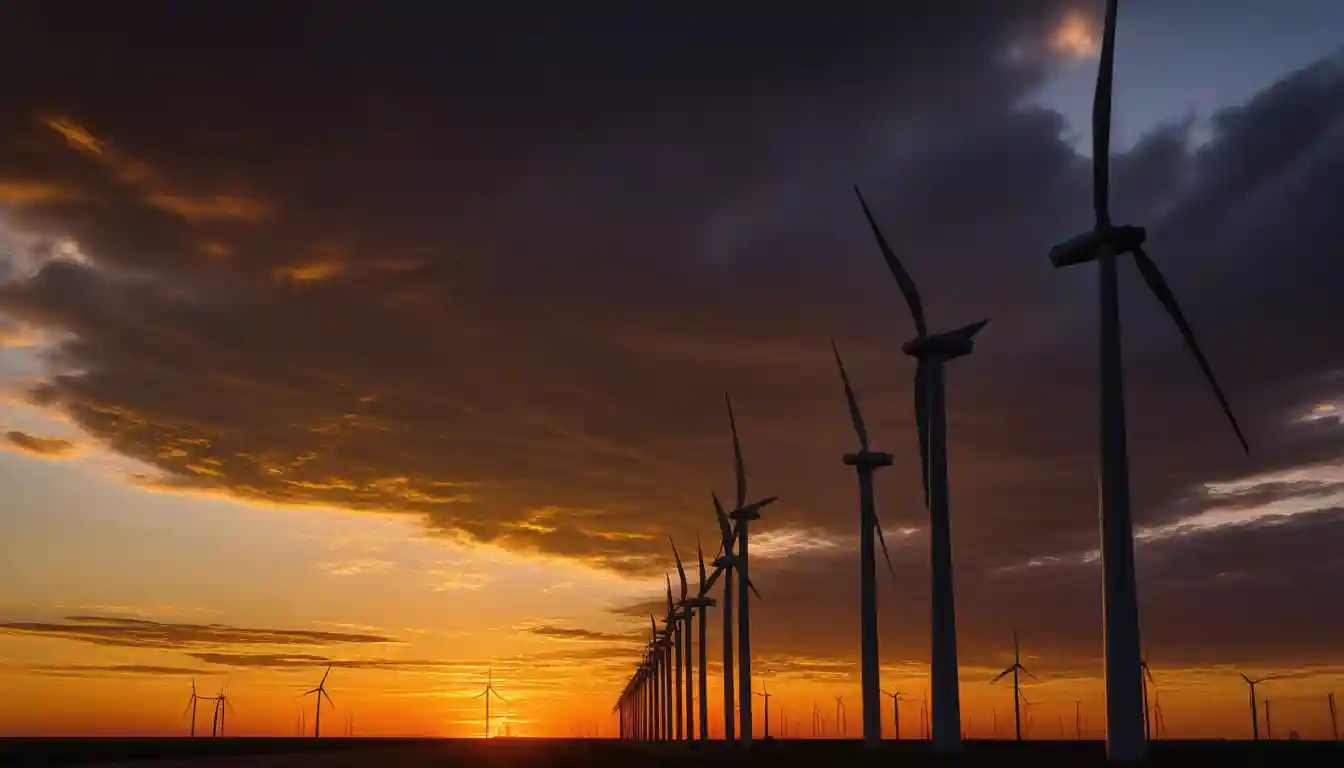The Power Revolution: Inside America's Private Energy Grid Renaissance
AMARILLO, Texas — In the windswept plains of the Texas Panhandle, where cattle once defined economic prosperity, a new kind of infrastructure is taking shape—one that could fundamentally reshape how America powers its digital future.
Fermi America's announcement today of an 11-gigawatt private energy grid represents more than ambitious corporate planning. It signals the emergence of a parallel power economy, where tech giants and energy developers are constructing vast, self-contained electrical systems to bypass the increasingly strained public grid that has served America for over a century.
The scale is staggering. This single facility would generate enough electricity to power roughly 8 million homes—larger than the peak demand of many individual states. Yet it will serve primarily artificial intelligence computing centers, the power-hungry engines driving America's technological supremacy in an increasingly competitive global landscape.

When Public Infrastructure Meets Private Ambition
The partnership announced between Fermi America, engineering firm Parkhill, and construction giant Lee Lewis Construction reflects a broader recalibration occurring across the American energy landscape. Data centers, particularly those serving AI workloads, now consume approximately 4-4.5% of U.S. electricity—a figure projected to potentially triple by 2028 according to Department of Energy scenarios.
(Projected U.S. data center electricity consumption and capacity signals tied to AI workloads; figures reflect recent analyses and forecasts and illustrate a steep upward trajectory from mid‑2020s baselines into the 2030s.)
| Item | Value | Year/Period | Source note |
|---|---|---|---|
| U.S. data center electricity consumption (baseline) | ~176 TWh; ~4.4% of U.S. electricity | 2023 | Lawrence Berkeley National Laboratory (LBNL) baseline frequently cited in policy analysis |
| Projected U.S. data center electricity consumption | ~260 TWh | 2026 | International Energy Agency (IEA) projection for U.S. data centers |
| U.S. total electricity consumption (record highs) | ~4,193 TWh (2025); ~4,283 TWh (2026) | 2025–2026 | U.S. Energy Information Administration (EIA) Short-Term Energy Outlook updates attributing growth partly to AI/data centers |
| Data centers’ role in U.S. load growth | Data centers driving a large share of demand growth this decade | 2020s | IEA analysis of AI-driven scenarios |
| Potential U.S. data center capacity pipeline | >80 GW new capacity possible by 2030 | Through 2030 | CSIS synthesis of industry pipeline tracking and LBNL context |
| Hypothetical annual consumption if pipeline fully realized | >800 TWh | By ~2030 (if fully energized and utilized) | CSIS scenario illustration (not a central forecast) |
| U.S. data center power demand (capacity) | ~35 GW → ~78 GW | 2024 → 2035 | BloombergNEF projection; growth explicitly tied to AI compute expansion |
| Average hourly electricity use (implied) | ~16 GWh → ~49 GWh | 2024 → 2035 | BloombergNEF accompanying metric indicating increased utilization/density due to AI |
| System planning signal | Upward revisions to commercial-sector demand (includes data centers) | 2025–2026 | EIA revisions reflecting AI/data center surge |
Traditional utility interconnection processes, designed for predictable industrial loads, are buckling under requests for unprecedented amounts of instantaneous power. Interconnection queues now stretch years into the future, while the specialized equipment required—massive transformers, gas turbines, high-voltage switchgear—faces backlogs extending 5-7 years.
Did you know? An electricity interconnection queue is the grid’s waiting list where new power projects—like solar, wind, batteries, or large loads—undergo engineering studies to ensure they can connect safely and identify any transmission upgrades and costs; because applications surged far faster than grid capacity and planning, many regions face years-long backlogs, with “zombie” projects that never advance clogging the line, prompting reforms such as cluster studies and “first-ready, first-served” rules to speed up approvals, reduce speculative entries, and unlock more clean energy.
This infrastructure bottleneck has created what energy analysts describe as a "shadow grid" economy. Major technology companies are increasingly bypassing public utilities entirely, opting instead for dedicated generation facilities that can deliver power on accelerated timelines.
Microsoft's 20-year agreement with Constellation Energy to restart Three Mile Island's Unit 1, providing 835 megawatts exclusively for data centers, exemplifies this trend. Amazon Web Services secured an even larger commitment—1.92 gigawatts from the Susquehanna nuclear facility in Pennsylvania through 2042. Oracle and OpenAI are developing over 5 gigawatts of capacity across multiple U.S. sites, including a flagship facility in Abilene, Texas.
The Texas Advantage: Policy, Geography, and Ambition Converge
Texas has emerged as the epicenter of this private grid revolution, offering a combination of regulatory flexibility, abundant land, and political support that other states struggle to match. The state's recently passed House Bill 14 created a $350 million Advanced Nuclear Development Fund and established a dedicated nuclear office—explicit signals of official support for next-generation energy infrastructure.
The ERCOT grid, Texas's independent power market, has demonstrated greater willingness to accommodate large, behind-the-meter installations compared to more regulated markets in other regions. State policymakers have publicly discussed scenarios where electricity demand could nearly double, driven primarily by data center growth and related industrial development.
Did you know? Texas runs most of its own electric grid through ERCOT, a nonprofit system operator that manages power for about 90% of the state and over 26 million customers. It’s largely isolated from the Eastern and Western U.S. grids—connected only by a few DC ties—so ERCOT balances supply and demand in real time within Texas, operating an energy-only market and dispatching power across tens of thousands of miles of transmission lines without owning any generation or wires. This unique setup, overseen by the Public Utility Commission of Texas, has helped Texas rapidly add wind, solar, and battery storage—but it also limits the state’s ability to import power during extreme weather, which can amplify reliability and price risks.
Fermi America's choice of Amarillo reflects careful strategic positioning. The location sits adjacent to the Department of Energy's Pantex facility and benefits from existing high-voltage transmission infrastructure. More importantly, it provides access to the Ogallala Aquifer—a critical consideration for facilities requiring substantial water resources for cooling.
The company's local partnerships signal an understanding that mega-scale infrastructure projects require more than favorable regulations. Parkhill, founded in 1944 and headquartered in Lubbock, brings seven decades of engineering expertise to the project. Lee Lewis Construction, which has appeared on Engineering News-Record's Top 400 Contractors list for over 40 consecutive years, provides the construction management capabilities essential for delivering projects of this complexity.
Nuclear Renaissance Meets Digital Demand
Perhaps most significantly, Fermi America's plans incorporate four Westinghouse AP1000 nuclear reactors, potentially providing 4.4 gigawatts of carbon-free baseload power. This nuclear component distinguishes the project from purely gas-fired alternatives and positions it within the broader resurgence of American nuclear energy.

The AP1000 design, already certified by the Nuclear Regulatory Commission, offers a pathway to large-scale nuclear deployment that bypasses some of the regulatory uncertainties that have plagued the industry. However, recent experience with AP1000 construction—most notably at Plant Vogtle in Georgia—demonstrates that even certified designs face substantial execution challenges. The Georgia project ultimately required approximately 15 years and over $30 billion to complete.
Industry analysts suggest that Fermi America's near-term development will likely emphasize natural gas generation and energy storage, with nuclear components representing a longer-term expansion phase. This phased approach reflects practical realities around equipment availability, regulatory timelines, and capital requirements.
Investment Implications and Market Dynamics
For sophisticated investors, the Fermi announcement represents both opportunity and cautionary signal. The immediate value creation lies in the supply chain serving these massive infrastructure projects—high-voltage transformers, gas turbines, specialized cooling systems, and project finance structures.

Equipment manufacturers face unprecedented order backlogs. General Electric Vernova, Siemens Energy, and Mitsubishi are experiencing multiyear delays for large gas turbines, while transformer manufacturers struggle with both supply chain constraints and skilled labor shortages. Companies that have secured early positions in these supply chains may significantly outperform broader market expectations.
The financing requirements for these projects create opportunities in specialized project finance and infrastructure debt markets. Facilities of this scale require innovative capital structures that balance construction risk, operational performance, and long-term power purchase agreements with technology companies.
However, execution risks remain substantial. Water resources in the Texas Panhandle face increasing stress, particularly during drought cycles. Even closed-loop cooling systems require significant water makeup, and public opposition to large industrial water users has intensified across the Southwest.
Regulatory evolution presents another uncertainty. While Texas currently maintains a supportive stance toward private grid development, cost-shift concerns among traditional utility customers could prompt policy adjustments. If private facilities avoid contributing to transmission infrastructure costs while maintaining grid interconnection rights, regulators may impose new charges or operating restrictions.
The Broader Energy Transformation
The scale of announced private grid projects suggests that America is entering a period of fundamental energy infrastructure transformation comparable to the rural electrification programs of the 1930s or the interstate highway system of the 1950s.
Beyond individual project announcements, this trend reflects the inadequacy of existing institutional arrangements to meet the demands of a rapidly digitalizing economy. Traditional utility planning processes, designed around incremental load growth and centralized generation, are proving insufficient for the concentrated, high-density demands of artificial intelligence computing.
Geothermal energy represents another emerging component of this transformation. Google's partnership with Fervo Energy, scaling from initial 3.5-megawatt pilots to 115 megawatts in Nevada, demonstrates the potential for 24/7 carbon-free energy sources that complement solar and storage.
Looking Forward: Risks and Opportunities
The success of projects like Fermi America's Amarillo facility will likely determine whether private grids become a permanent feature of the American energy landscape or represent a temporary response to current infrastructure constraints.
Water availability will prove critical. The Ogallala Aquifer, while substantial, faces long-term depletion pressures that could intensify with multiple large industrial users. Technological solutions—closed-loop systems, air-side economization, advanced cooling technologies—may mitigate but not eliminate these constraints. Historical water level changes in the Ogallala Aquifer, illustrating the long-term depletion trend.
| Time Period | Average Water-Level Change (feet) | Change in Recoverable Water in Storage (acre-feet) |
|---|---|---|
| Predevelopment (approx. 1950) to 2015 | -15.8 | -273.2 million |
| 2013 to 2015 | -0.6 | -10.7 million |
| Predevelopment (approx. 1950) to 2019 | -16.5 | -286.4 million |
| 2017 to 2019 | +0.1 | +1.6 million |
Equipment supply chains represent the most immediate bottleneck. Companies that can secure delivery slots for critical components—particularly large transformers and gas turbines—will determine project timelines more than regulatory processes or financing availability.
The broader question involves system integration. As private grids proliferate, their interaction with public utilities during emergency conditions, maintenance periods, and demand fluctuations will require new regulatory frameworks and operating procedures.
For investors positioned in the infrastructure value chain—from specialized engineering firms to equipment manufacturers to project developers—the current environment offers potentially exceptional returns for those who can navigate execution complexities and regulatory evolution.
The age of private power has arrived, reshaping not only how America generates electricity, but who controls the infrastructure that will determine technological leadership in the decades ahead. Fermi America's 11-gigawatt vision may prove ambitious, but the trend it represents appears both irreversible and accelerating.
House Investment Thesis
| Aspect | Summary |
|---|---|
| Project | Fermi America's 11-GW private, behind-the-meter power grid in Amarillo, TX, for AI compute. Integrates gas, grid power, solar, batteries, and future nuclear. |
| Context | Part of a major industry trend toward dedicated power for AI to bypass grid bottlenecks. Its 11-GW scale is an outlier, positioning it as a "category creator." |
| Key Peers | AWS-Talen: 1.92-GW nuclear PPA. Microsoft-Constellation: 835-MW nuclear restart. Vantage: 1.4-GW TX campus. OpenAI/Oracle: >5 GW under development. |
| Root Causes | 1. AI Load Surge: Massive, dense power demand. 2. Grid Bottlenecks: Long interconnection queues, transformer/turbine shortages. 3. Policy: TX laws (SB6/HB14) enabling large loads and nuclear development. 4. Decarbonization: Need for firm, low-carbon power. |
| Feasibility (Near-Term) | Phase 1 (2027): Realistic build is 0.6-2 GW of dispatchable capacity from combined-cycle gas turbines (CCGT), reciprocating engines, batteries, and grid imports. Challenging but feasible. |
| Feasibility (Nuclear) | A 2030s story. AP1000 is certified but FOAK builds (Vogtle) took ~15 years and >$30B. Nth-of-a-kind could be faster, but FID to COD is still a late-decade prospect. Treat as a call option. |
| Key Risks | Capex: Tens of billions required. Supply Chain: HV transformers, turbines, EPC bandwidth are constrained. Water: Ogallala Aquifer is declining; water politics are a key risk. Regulatory: TX SB6 introduces curtailment rules for large loads. |
| Investment Angle (Now) | Biggest value is in near-term hardware and balance-of-plant: HV equipment, gas turbines, switchyards, cooling systems, and project finance. |
| Investment Angle (Future) | Nuclear represents optionality—a call option on low-carbon baseload for the 2030s. |
| Final Take | Not vaporware. Represents the future model for AI power: private wires, staged dispatchable capacity, and nuclear optionality. Treat the 11-GW headline as a long-term program, not an immediate commitment. Value is in near-term execution. |
NOT INVESTMENT ADVICE
